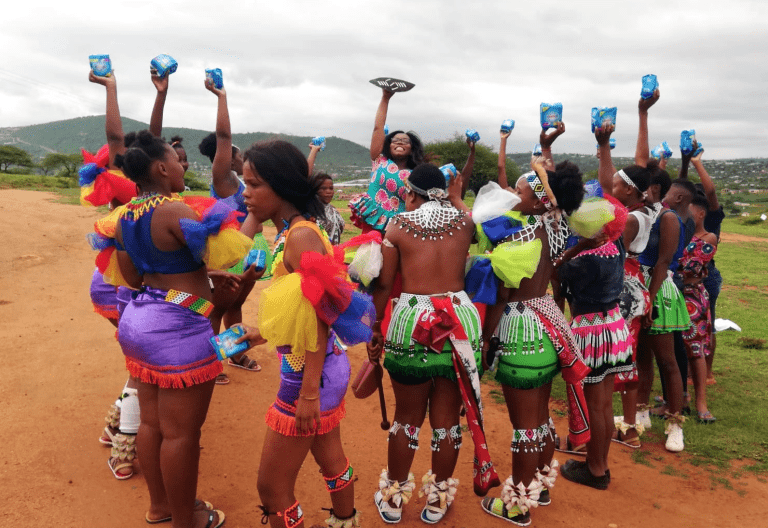Feature
In South Africa, Pact works to lower new HIV infections among adolescent girls

Adolescent girls and young women (AGYW) are disproportionally affected by HIV. Of all new HIV infections among adolescents in sub-Saharan Africa, 80 percent are in girls between the ages of 15 and 19, according to UNAIDS.
Reaching this population in South Africa is paramount to Pact’s Government Capacity Building and Support (GCBS) program, which has focused attention and resources on HIV prevention, case finding, and linkage to anti-retroviral therapy for adolescent girls. Through GCBS, Pact is helping to build the capacity of South Africa's Department of Social Development (DSD) to better support orphans and vulnerable children, especially those affected by HIV. By collaborating with South Africa’s government, including DSD, the Department of Health and local municipalities and schools, Pact has helped to markedly increase the number of adolescent girls receiving HIV prevention and sexual health services across the 10 districts where GCBS works.
In the 2019 fiscal year, GCBS reached approximately 14,800 girls. In the first half of this fiscal year alone, the program has reached 16,600.
In Mpumalanga’s district of Ehlanzeni, GCBS has focused on adolescent girls whose HIV status was unknown, reaching them at their schools through health and wellness drives. The program selected schools with the highest rates of new HIV infections and student pregnancy, based on data from the local municipality. GCBS targeted these schools with its government partners, providing group interventions including sexual health workshops where Department of Health nurses focused on HIV prevention and human papillomavirus (HPV) screening. Girls’ risk was assessed using a standardized index tool, and they were referred for services accordingly.
Changing risky social behavior is an integral part of GCBS’s package of services for AGYW. At targeted schools, GCBS held meetings with parents and caregivers to educate them about the value of specialized programs for adolescent girls such as YOLO, You Only Live Once, a DSD program that Pact supports to help older youth overcome social and behavioral drivers of HIV. After the meetings, many new girls enrolled.
Change in KwaZulu-Natal
In KwaZulu-Natal, GCBS focused on the districts of Zululand and eThekwini with specialized school holiday programs.
In eThekwini, GCBS staff held traditional girls support groups, meeting with girls once a month as they prepared for their Zulu reed dance, which occurs annually. This provided an ideal small-group setting for GCBS to provide evidence-based sexual and reproductive health education, including information on HIV prevention and why it’s important to wait to become sexually active. GCBS navigated strict protocols to reach the girls, gaining permission through a local chief and local women leaders, the custodians of the groups.
GCBS is committed to stemming the rise of new HIV infections among adolescent girls in sub-Saharan Africa, making a difference with innovative partnerships, collaboration and accessible programming.
Implemented by Pact, the Government Capacity Building and Support program is funded by USAID and PEPFAR.